Back

With all the comforts and amenities of Suite Domes, our two-story, 3.7m/12ft tall Suite

Explore Torres del Paine in all its glory with our exceptional Torres del Paine tours. The visually stunning W Trek highlights the best of Torres del Paine including the Grey Glacier, French Valley and the Tower base - a once-in-a-lifetime experience. Team up with our highly experienced and knowledgeable guides and head off on one of the most famous treks in the world, ending each day with spectacular sights, delicious meals and comfortable nighttime accommodations.
This program includes 2 nights of accommodation away from EcoCamp at campsites along the trail.
Did you run out of availability? Check this alternative.
_resultado.webp?width=1067&height=800&name=EcoCamp%20with%20a%20Drone%20(5%20de%201)_resultado.webp)
Let’s begin the trip of a lifetime! You can travel to Patgonia from Santiago and land either in Puerto Natales or Punta Arenas. We’ll start with a morning pick-up from your hotel or the airport and drive to EcoCamp Patagonia, located in the world-famous Torres del Paine National Park, one of the most beautiful places in South America. On the way to EcoCamp, we’ll make a stop in Puerto Natales, a small, lively town on the shores of Last Hope Sound (Ultima Esperanza) where we can enjoy a hearty lunch of local food. This scenic journey ends with our arrival at EcoCamp Patagonia, nestled in the heart of Torres del Paine National Park with a prime view of the majestic Paine Towers.
Overnight at EcoCamp Patagonia.
Meals: Lunch or Box Lunch, Dinner.

We’ll dive into our Patagonian adventure with a pleasant walk along the Cuernos Trail which leads to the beautiful Lake Nordenskjold. During this warm-up walk - a day hike of medium difficulty -, we will have the opportunity to admire the park’s exquisite flora and fauna and take in the views of the horn-like peaks of slate that sit atop the gray granite of the Paine Massif. The trek may end at Refugio Los Cuernos, a small and cozy mountain guesthouse located on the shores of Lake Nordenskjold. Or it will end at Domo el Francés, located between Cuernos and Italiano camping sites, with an amazing view of Nordenskjöld Lake. The evening is at your leisure.
Hiking Distance: 12 km./7.5 mi.
Hiking Time: 4-5 hrs.
Max. Altitude: 244 m./800 ft.
Elevation gain: 300 m. / 1148 ft.
Overnight at Camping Cuernos or Camping El Francés (depending on availability)*.
Meals: Breakfast, Box Lunch, Dinner.
*Please ask your Travel Experience Designer about upgrades to shared dormitories.
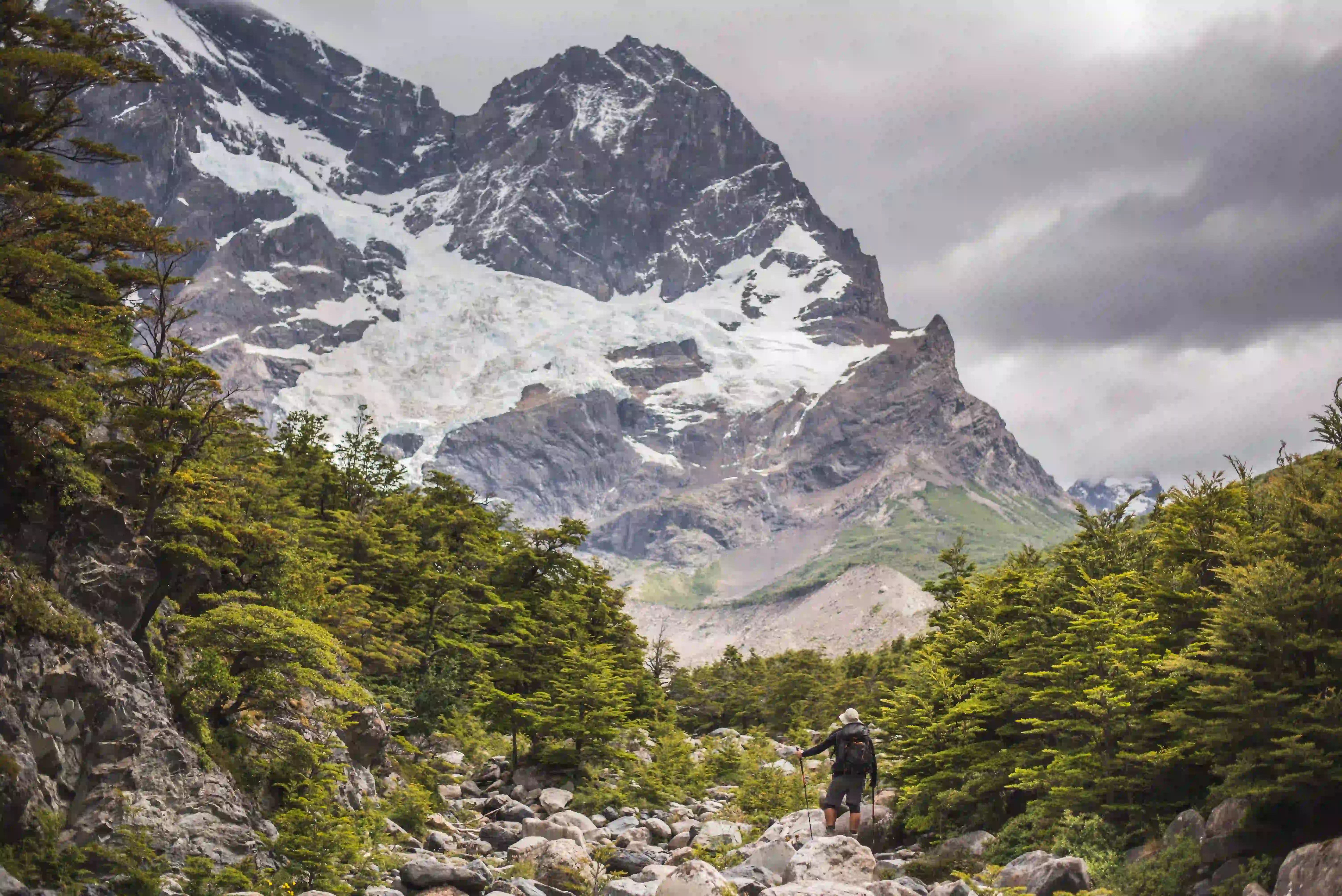
Get your boots ready for today’s challenging, yet rewarding, trek. After breakfast at Refugio Los Cuernos, we'll begin hiking along a steep trail leading into the very heart of the Paine Massif - the famed French Valley. How far we’ll go depends on our group's trekking rhythm. A swifter walk will lead us to the French River’s hanging bridge, located at the foot of the south-eastern face of the Massif. We will then continue to ascend towards the upper section of the valley to marvel at spectacular views of the extensive mass of the valley's geological formations: Hoja (Blade), Máscara (Mask), Espada (Sword), Catedral (Cathedral), Aleta de Tiburón (Shark’s Fin) and the magnificent Fortaleza (Fortress). After our upward trek, we will pause for a tasty picnic and relax for a while. The day's trek will end with a descent through an undulating terrain of mixed grassland and light forest to Refugio Paine Grande.
Please note: An optional trek to Mirador Britanico is also available.
Hiking Distance: 20 Km. / 12.4 Mi. (If you are hiking until Mirador Británico, that's an additional 4 Km. / 2.4 Mi.).
Hiking Time: 10 hrs.
Max. Altitude: 686 m./2250 ft.
Elevation gain: 820 m. / 2690 ft.
Overnight at Camping Paine Grande*
Meals: Breakfast, Box Lunch, Dinner.
*Please ask your Travel Experience Designer about upgrades to shared dormitories.

Today we will hike from the Paine Grande Refugio along the shores of Lake Pehoe to the northern side of Lake Grey ("Lago Grey"). We will feast on a picnic lunch before boarding the boat that sails to the huge, crystalline facade of Glacier Grey. From the southern end of Glacier Grey, we will transfer to EcoCamp. Due to the temperamental weather of the region, boat trips across the lake may occasionally be canceled or if the required minimum of 15 passengers is not reached. If this is the case, we will trek up to the sightseeing point to enjoy wonderful, panoramic stunning views of Grey Glacier instead. Afterward, it is time to return on foot to Paine Grande and take a catamaran to the dock, where we will be picked up and driven to EcoCamp.
Hiking Distance: 11 km./6.8 mi.
Hiking Time: 4 hrs.
Max. Altitude: 244 m./800 ft.
Elevation gain: 271 m. / 889 ft.
Overnight at EcoCamp Patagonia.
Meals: Breakfast, Box Lunch, Dinner.
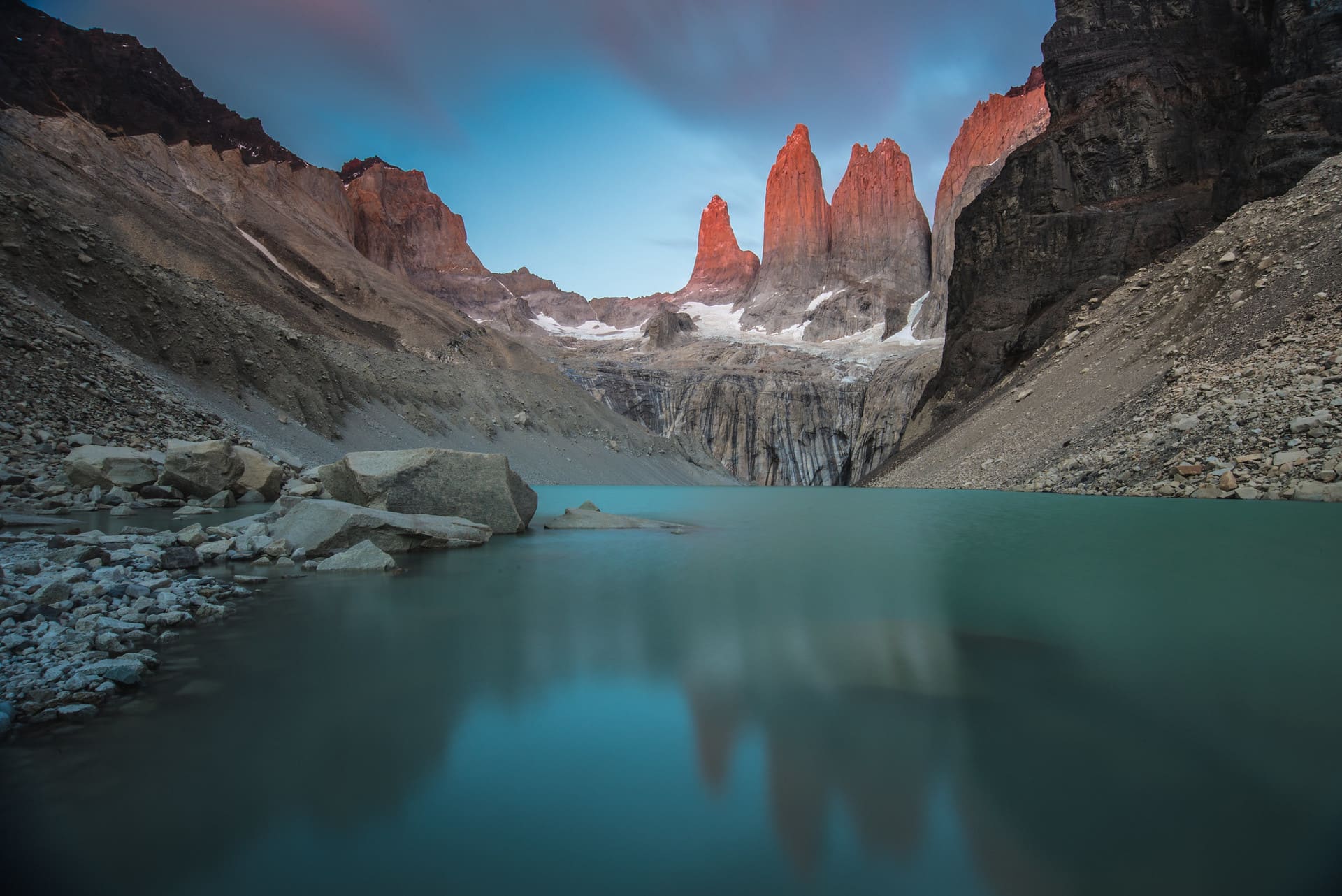
Today is the big day -- the walk to the base of the famous Paine Towers. We will walk from the campsite towards Hostería Las Torres before ascending to Ascencio Valley on the Tower’s eastern face. Mountain ridges, beech forests, and small rivers line the scenic walk towards the valley. Our big challenge is the steep moraine, a huge mass of boulders that lead to that iconic base of the Towers, the three gigantic granite monoliths that are the remains of a great cirque sheared away by glacial ice. After a tough uphill climb, the Towers eventually come into full view, rising majestically before us with the glacial lake visible below. Is there any better place in the world to have lunch? After feasting on the view,we backtrack along the same trail through Ascencio Valley and return to EcoCamp for a well-deserved dinner and some tasty Chilean wine.
Hiking Distance: 22 km./14 mi.
Hiking Time: 9 hrs.
Max. Altitude: 897 m./2942 ft.
Elevation gain: 1023 m. / 3356 ft.
Overnight at EcoCamp Patagonia.
Meals: Breakfast, Box Lunch, Dinner.
_resultado.webp?width=1080&height=720&name=Laguna%20Azul%20al%20Amanecer%20(25%20de%201)_resultado.webp)
On the sixth day, we'll opt for a less strenuous trail in order to counter our exhausting efforts of the previous day. After breakfast, we will drive to the northern shore of Sarmiento Lake where the Aonikenk Trail begins. As we hike northbound, we will spot an impressive range of Patagonian fauna on the vast plains, and maybe even the occasional puma print! We will pass the charming Goic lagoon and, after approximately 5 km of relaxed walking, we will reach the Laguna Amarga ranger station where we will be picked up and driven towards Laguna Azul, home to many wild guanacos and ñandúes. We will pause occasionally to admire the views of the Patagonian steppe and the Towers from its many perspectives. At Laguna Azul, we will hike to the lookout point where we will be treated to a gorgeous view of both the lagoon and the granite towers. Afterwards, we will head back to Ecocamp to celebrate with a farewell dinner. How epic was it to explore the region on a W Trek?
*Please note: if there are more than 6 travelers in the group, there is an option to split into two groups, with one group (or the whole group if everybody's in the mood!) cycling to Laguna Azul!
Hiking Distance: 6 km./4 mi.
Hiking Time: 3 hrs.
Max. Altitude: 300 m./984 ft.
Elevation gain: 267 m. / 876 ft.
Overnight at EcoCamp Patagonia.
Meals: Breakfast, Box Lunch, Dinner.
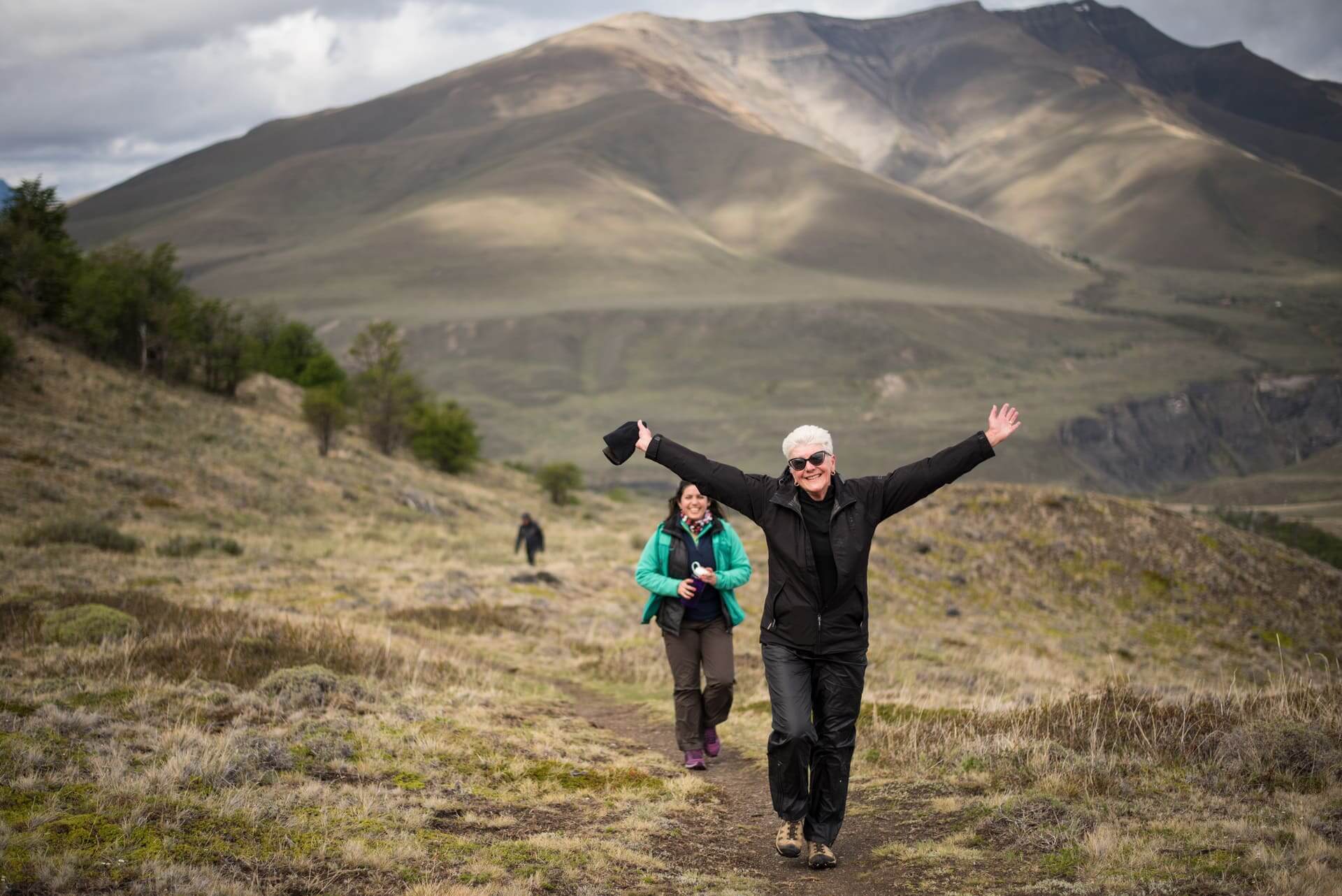
Onto the next adventure! Today we will board an early morning vehicle, sit back, relax, and enjoy a scenic ride back to Puerto Natales or Punta Arenas in time to catch an evening flight onwards. Alternatively, transportation to El Calafate can also be organised.
Meals: Breakfast, Box Lunch.
If you can't find availability or are looking for something that better fits your preferences and itinerary, we have the perfect solution for you!
Discover our exciting W Trek - Brush Variant program, sailing from the fjords to the heart of the Paine Massif, with stunning views of three magnificent glaciers and virgin forests.
Departures are every Friday from November to March. Don't hesitate to explore this incredible experience by clicking here.
Ecocamp Patagonia is located in the heart of Torres del Paine National Park in Chile with views of the majestic granite Paine Towers. It was the first geodesic dome hotel in the world, offering an upscale camp at the domes inspired by the region’s ancient nomadic inhabitants.
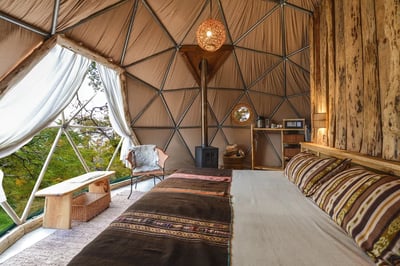 Suite domes were designed to further our goal of providing comfort in a natural setting with minimal environmental impact, and also maintain the hotel’s familiar and cozy vibe. The domes have comfortable double or twin beds, a wood stove and a private bathroom with a state-of-the-art composting toilet.
Suite domes were designed to further our goal of providing comfort in a natural setting with minimal environmental impact, and also maintain the hotel’s familiar and cozy vibe. The domes have comfortable double or twin beds, a wood stove and a private bathroom with a state-of-the-art composting toilet.
.webp?width=400&name=Suite%20Loft%20%20(4).webp)
Suite dome lofts are two-storey domes which fit up to four people and have comfortable double or twin beds both up and downstairs. These domes, ideal for families or groups of friends, come with a wood stove, a private terrace and a private bathroom with a state-of-the-art composting toilet.
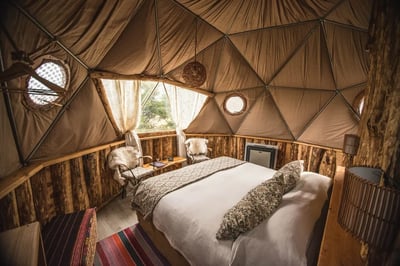
Spacious, comfortable and equipped with private bathrooms, Superior Domes are the optimum choice for trekkers wanting that bit more space and comfort at the end of a long day’s walk. Each Superior Dome has comfortable queen-size or twin beds, a propane heater, skylight windows and a private bathroom with a sophisticated composting toilet.
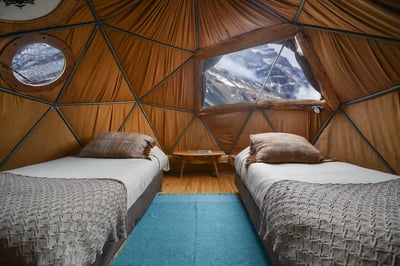
EcoCamp Standard domes were the world's first lodge accommodation in geodesic shape. They are resistant to the strong Patagonian winds, and come equipped with two single beds (doubles on request), cozy fleece blankets and feather quilts. There are windows in the ceiling for stargazing. Standard domes include shared bathrooms which are large, comfortable and gender divided.
Depending on the itinerary, guests will have the opportunity to camp at either the picturesque El Francés or Los Cuernos Sector during their stay. Both locations offer stunning views of the surrounding landscapes and are perfect for immersing yourself in the natural beauty of Torres del Paine National Park.
Optional upgrade to the shared dormitories inside Refugios are available upon request, please ask to your Travel Experience Designer for more information.
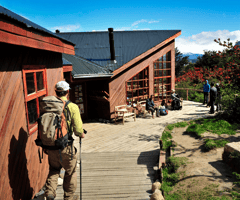
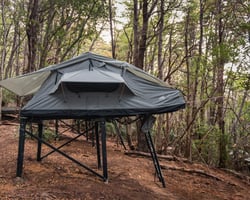

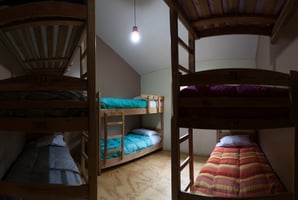
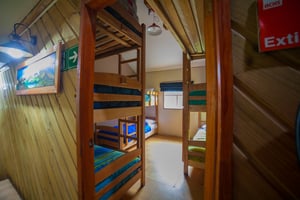
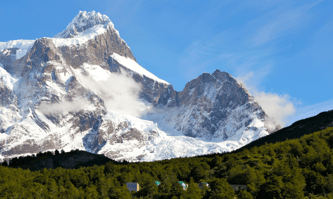
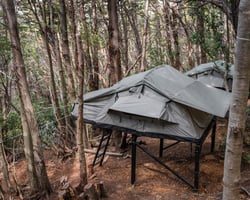
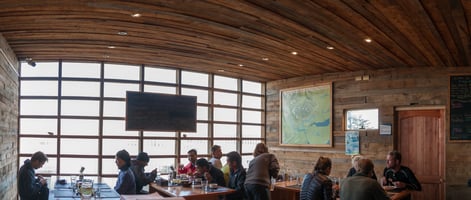
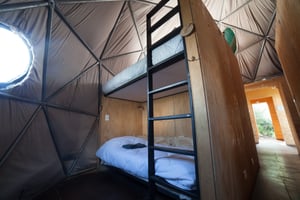

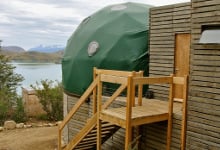
Accommodation in tents for 2 people will be provided in the corresponding shelter facilities. The shelters are heated and have a very comfortable feeding area where abundant meals are served. Alternatively, guest houses or lodges have rooms for 4 to 6 people. The beds are single bunk beds (sleeping bags and fleece blankets are provided) while the bathrooms are also shared and have hot water.
Optional upgrade to the shared dormitories inside Refugios are available upon request, please ask to your Travel Experience Designer for more information.
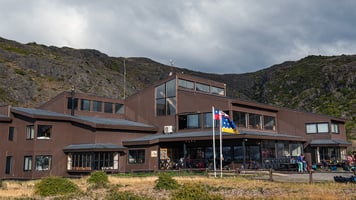
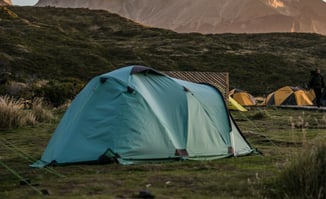
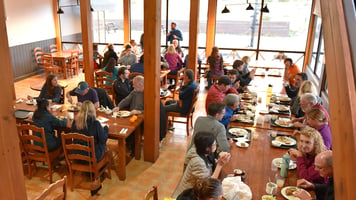
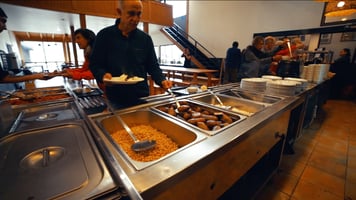
An optional upgrade to the shared dormitories inside Refugio Paine Grande can be requested. Please review availability and prices with your Travel Experience Designer.


Every Monday from October to April.
Departures require a minimum of 2 participants. If a given departure isn't available, you will be put on a waiting list.
This trip starts on Monday and finishes on Sunday with pickups and drop-offs in Punta Arenas or Puerto Natales. Please visit our Weekly Transfer Board for details of EcoCamp pick up and drop off times.
If you can't find availability or are looking for something that better fits your preferences and itinerary, we have the perfect solution for you!
Discover our exciting W Trek - Brush Variant program, sailing from the fjords to the heart of the Paine Massif, with stunning views of three magnificent glaciers and virgin forests.
Departures are every Friday from November to March. Don't hesitate to explore this incredible experience by clicking here.
During Low and Shoulder Season (October and April), the boat trip to Glacier Grey may be canceled, if this is the case, the itinerary will be modified sou depart from Paine Grande through the Pehoé Lake navigation or Las Carretas trail.
If refugios are unavailable, alternative accommodation will be provided in tents or domes with prior notice.
If you choose a Standard Dome and you are traveling alone, you can share the dome with another person of the same gender and pay the double base price. If you want the dome to yourself, you need to pay a Single Supplement.
Accommodation in the refugio will be provided in comfortable tents or domes, including mat, sleeping bag and a polar fleece liner; our team will set up and dismantle all this. The campsite provides satisfactory bathroom facilities. Meals will be served inside the refugio.
Please note: During Shoulder and Low Season (October and April) the Towers Base Trek excursion might be canceled due to weather conditions and safety concerns.
This is the right trip for energetic people who like to be active and have a spirit of adventure and a positive attitude. During this trek you will walk a total of 77kms /48,5mi. On the map, in the itinerary section, click on the walking person icon for daily information.
To enjoy this trek it is essential to be in shape before you arrive. It is not wise to regard this trek as a means of getting into shape or losing excess weight. Start a program of conditioning well before departure.
Those aged 13 years or older are welcome and are considered adults.
Children between 10 and 12 might be accepted in this program if their legal guardian sends a formal letter stating that the child is prepared for such an intense trekking trip and authorizes us to hire a private guide in case the child cannot perform well during the trek.
Children under 10 years of age cannot participate in this trip.
This trip doesn’t offer a special discount for children.
In Torres del Paine and throughout Patagonia transport is in minivans that normally seat from 8 to 14 people. Pick up/ off times will be confirmed locally by our operations team. An exclusive toll-free emergency number will be available for anyone needing additional support while they are in Chile.
The vast unbroken stretch of ocean to the west and south of the South American continent leaves the Patagonian Andes very exposed to the winds that circle the Antarctic landmass, making the weather hard to predict. Fine weather may deteriorate almost without warning; even in summer (December to March), you should come prepared to find strong cold winds (up to 130 km/hr) and rainfall. Summer’s average temperature is 11ºC (52ºF), ranging between 2 to 24ºC (35 to 75ºF).
Passengers need to be prepared for summer and winter all at once. We recommend the following:
The porters are people who will help us with the logistics of transporting luggage during our trip. They will be in charge of carrying items such as: tents, sleeping bags, mats/insulators and dry bags*. They will transport these items from Ecocamp or the camps occupied during the trek, to our next stops, making sure to arrive on time so that we can find these items at our disposal once we arrive at the camps/refugios.
*Dry bags: Dry bags, as their name indicates, are waterproof bags in which we can store the items that we will not need during the walks and keep them dry and insulated while the porters transport them. The dry bag limit (regulated based on the weight that is healthy for porters to carry) is 15 Lt. and 5 Kg/11 Lb. each (in case there is more than one dry bag on your trip).
These bags will be labeled with your name so that they are not confused with those of other members of your group.
Upon arrival at EcoCamp, the guides will give a briefing to explain in detail the logistics of the dry baga and the next day's activity.
On the 7 Day W trek you will be given 1 dry bag, which you must fill with your belongings on day 1 of the itinerary upon arriving at Ecocamp. This bag will have the following organization/logistics.
Day 2: On day 2 of the itinerary, this bag will be transported from EcoCamp to Camping Cuernos or Francés (depending on availability), where it will wait for you with your belongings for that evening.
Day 3: On day 3 of the itinerary, this bag will be transported from EcoCamp to Camping Paine Grande, where it will wait for you with your belongings for that evening.
Day 4: The dry bag leaves from Paine Grande to EcoCamp, where you can have it when you arrive in the afternoon.
Taking into account that you will only have access to 1 of the 2 dry bags during your trip (when your trip includes 2), we recommend the following to have optimal access to your items:
The weather in Patagonia can be difficult to plan around at times. We reserve the right to change the order of the days in any itinerary at the discretion of the trip guide and based on operational considerations. The trip guide can modify, change or eliminate part of the itinerary based upon these safety/weather considerations.
Highlights
Photo Gallery
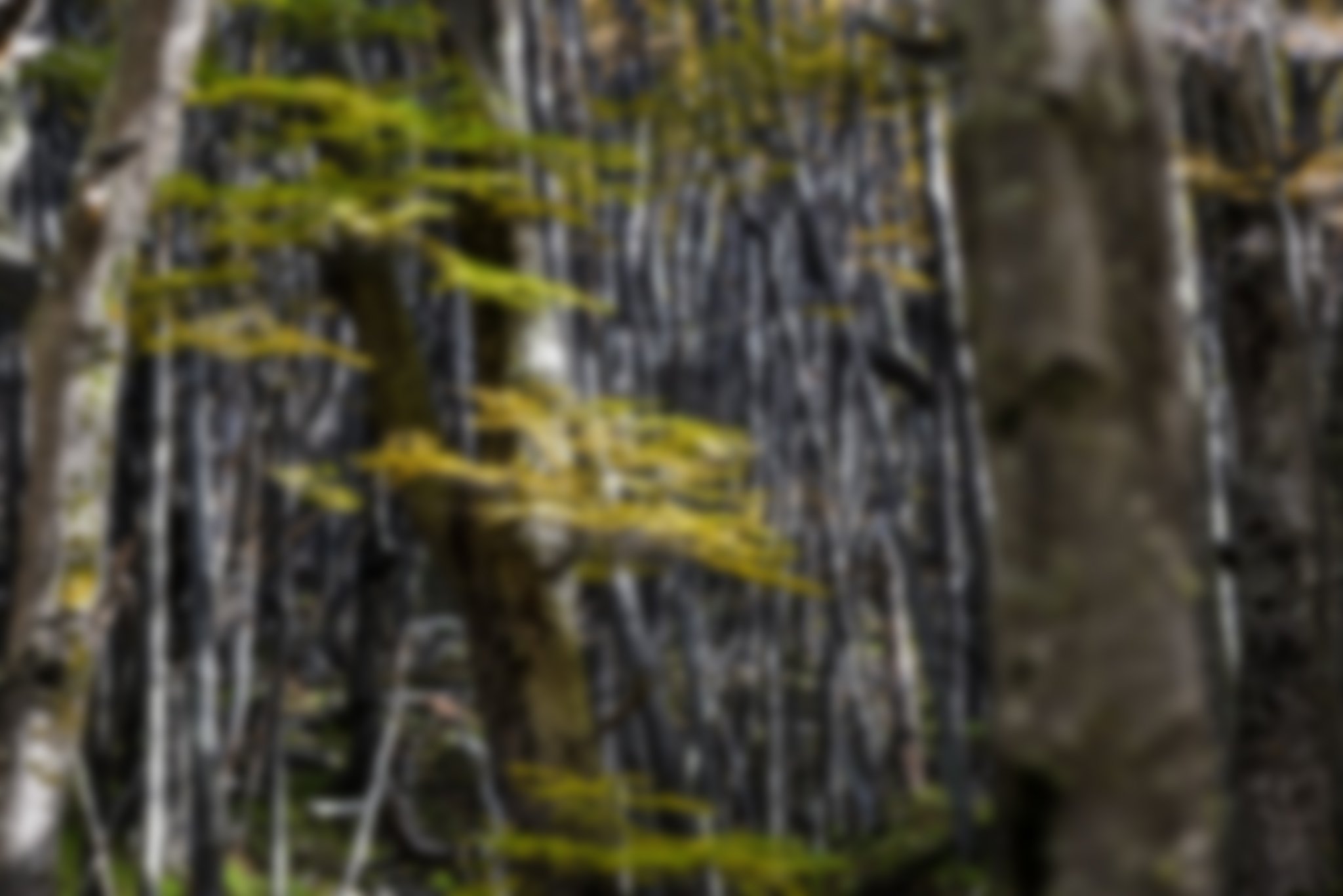

“We did the 7 day W trek - amazing experience. We started and ended our week at the Ecocamp and stayed 2 nights in refugios. The Ecocamp is very special. The dome was very comfortable, the staff extremely helpful and friendly. The guides were fantastic. The common rooms allowed a sense of shared community. From the Ecocamp, you are in the heart of Torres. I'm so glad we stayed here and highly recommend it.”
Subscribe to our newsletter
Domes that Connect
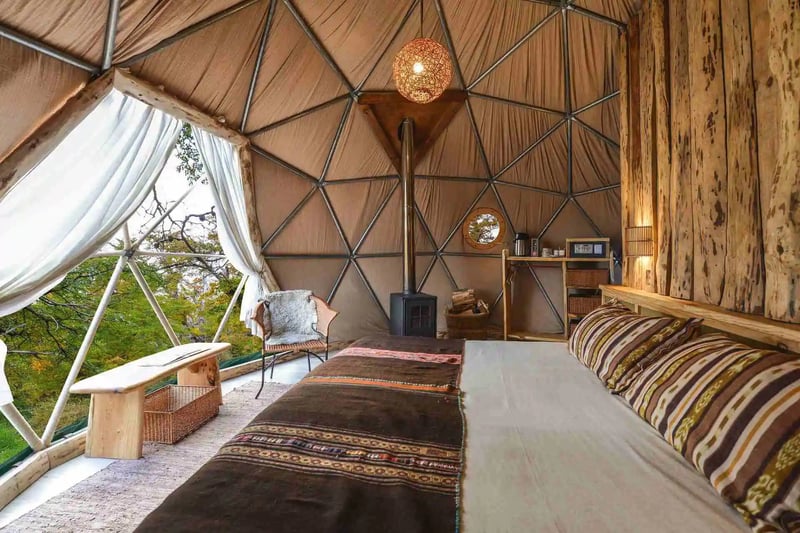
Domes
Spend your nights in our comfortable Standard, Superior or Suite Domes. Our high-quality accommodation is cozy, eco-friendly and has an authentic Patagonian feel.
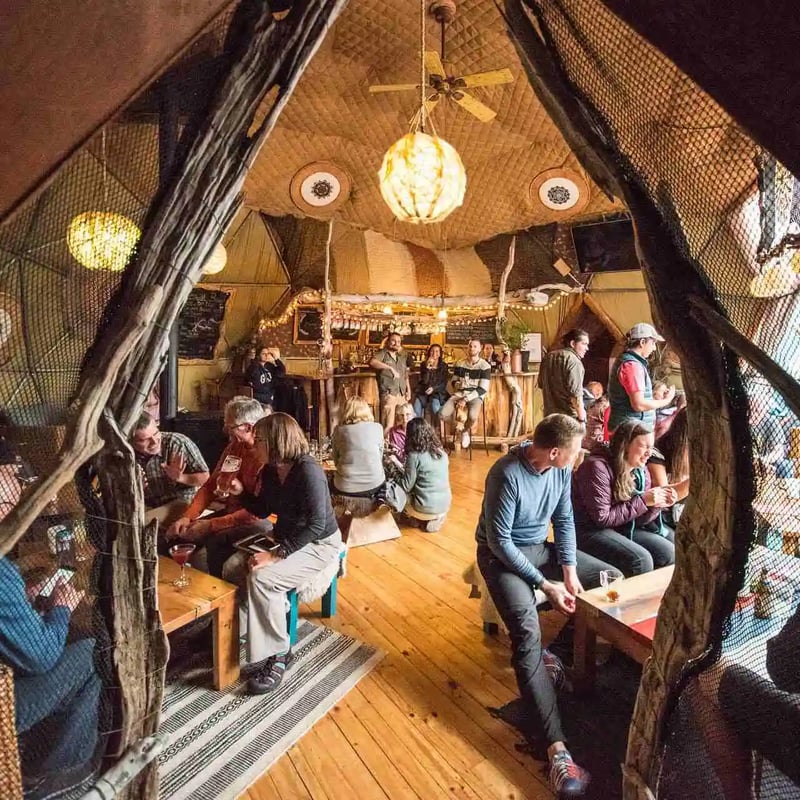
Community Domes
Meet and connect with people from all over the world! Our Community Domes are a great place to grab a drink, enjoy a delicious meal and strike a new conversation.
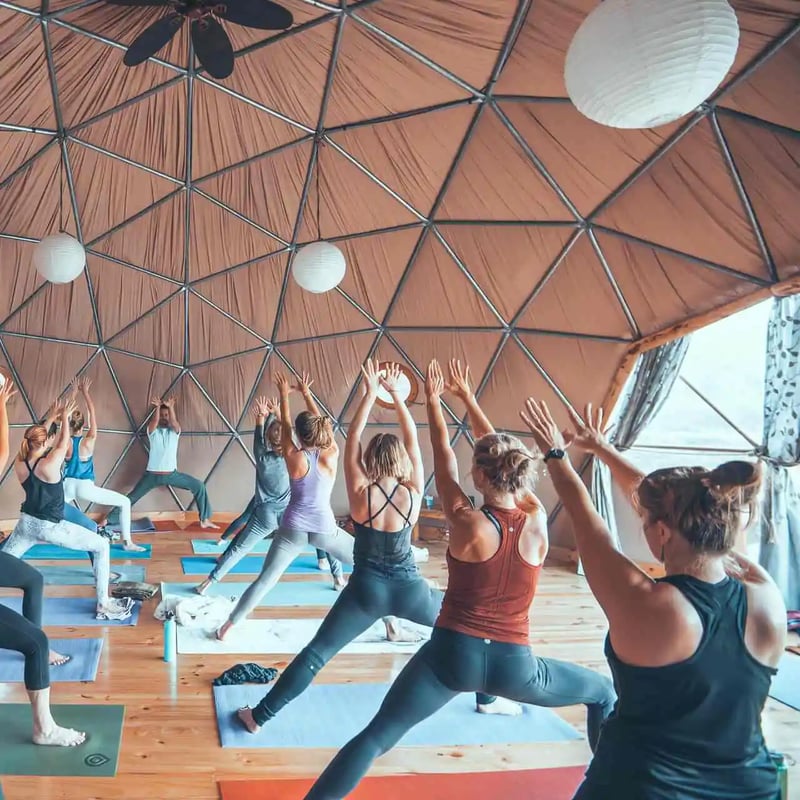
Yoga & Wellness Domes
Start your day with some stretches and poses in our Yoga Dome. We offer daily classes with an expert instructor.
Searching Availability...